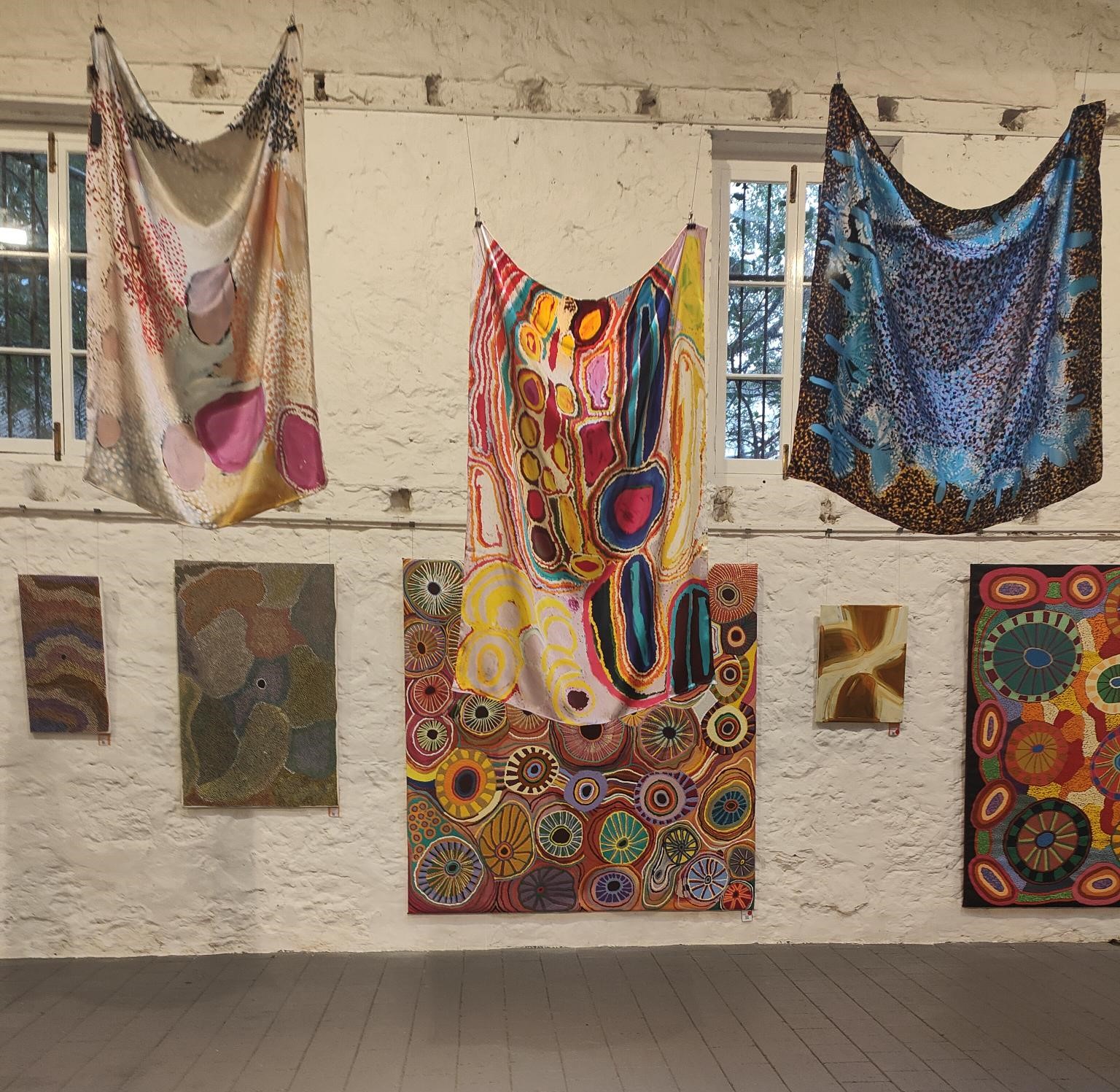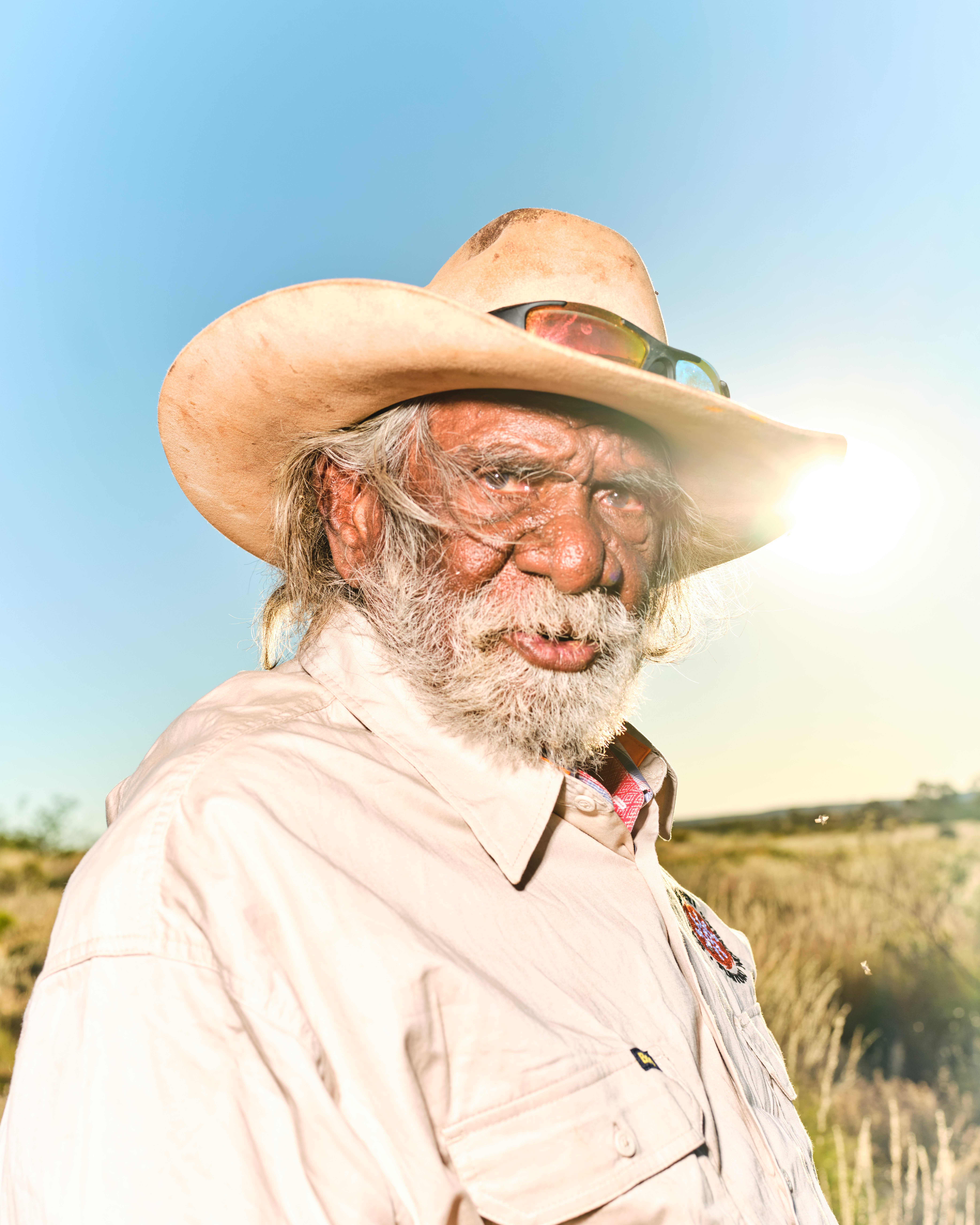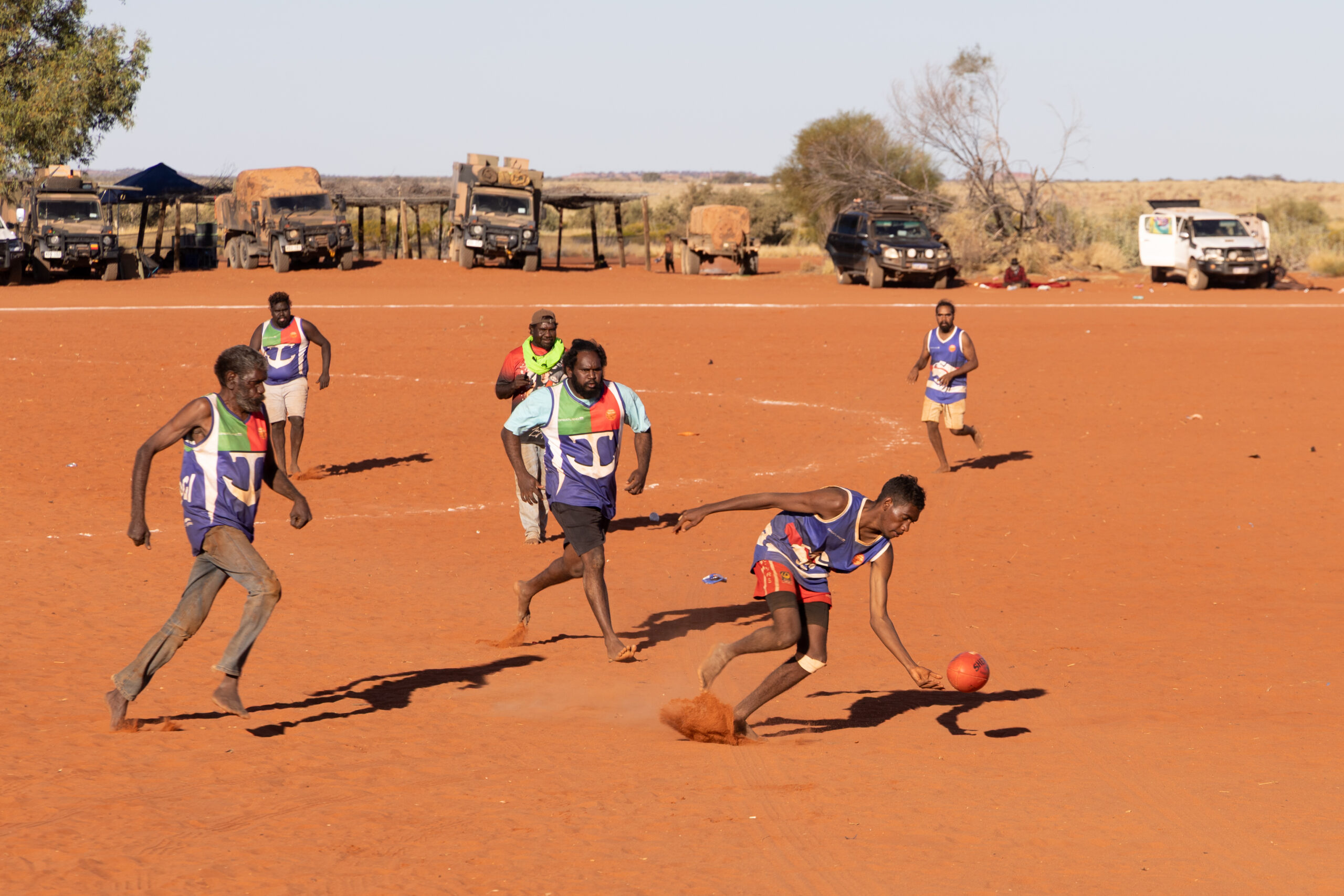
Martumili Artists’ most recent exhibition, Powerhouse Wanti (Powerhouse Woman), curated by emerging curator and Martumili Artist Sylvia Wilson, is a bold celebration of the resilience and strength of Martu women’s culture.
Showing at Fremantle’s Moores Building Art Space between May 25th and June 9th, four striking, large-scale black and white portrait photographs greeted the viewer upon entering the space- the ‘powerhouse wanti’ whose work featured in the show: Kumpaya Girgirba (Girgaba), Marianne Burton, Marlene Anderson, and Ngamaru Bidu. Moving into the main exhibition room, one was immediately struck by the captivating collection of paintings lining the walls, showcasing the vibrant colours, fluid forms, and strong cultural narratives for which Martumili Artists are renowned. Complementing the paintings, a striking installation of brightly patterned skirts named Wanti-Yuu (Woman-Yeah!) hung from the ceiling at the centre of the room.
The interplay between these three components – portraits, paintings, and skirts – formed a richly layered representation of the powerhouse wanti. Their physical image featured alongside the works they create, which are themselves representative of an important aspect of the women’s identity: their ngurra (home Country camp). The Wanti-Yuu installation, featuring skirts typically worn by the artists, was a further expression of their bodily presence. As Sylvia explains, Wanti-Yuu symbolises the empowerment of Aboriginal women through the act of creation; “skirts are that garment that makes you strong… it’s what they wear when they paint”. With intense patterning and bright colours, they are chosen and worn to express strength, personality, and uniqueness. Moreover, the installation pays homage to the Aboriginal women who have played a significant role in preserving their culture, traditions, and ways of life through decades of colonization, displacement, and oppression.
Powerhouse Wanti highlights women of deep personal significance to Sylvia Wilson. They are family to each other and to Sylvia through Martu kinship ties. As a Martu woman who “didn’t grow up Martu way” due to her early adoption, Sylvia shares how these were also the women that taught her “kinship, language, and Martu culture,” giving her “strength and courage to be a strong wanti inside the gallery and out in the community.” Additionally, their grouping in this show explores their relationships with each other as “strong women who put themselves last and take on a lot,” working tirelessly with a passion that runs in their blood. Undeniably, the strength of the women is made visible in their works- bold assertions of identity, experience and knowledge. Shown together, this strength magnifies, drawn from the relationships between the canvases and the extraordinary women who painted them.
During our interview, sitting at the desk in Moores Building Art Space, we watched as people streamed in and out of the building. Without exception, each visitor expressed their delight and even gratitude for the moving exhibition. Sylvia, who had chatted with ease with members of the public, found herself at a loss for words when reflecting on her accomplishments in working through each stage of the exhibition development- from the selection and installation of works, to the organising of the exhibition catalogue and other printed media, and finally delivering the exhibition opening. “I can’t explain it. Eight months of hard work and finally sitting here… to just really embrace what we’ve achieved. It’s been nerve-wracking, but I’m here and it’s just amazing. I’m so grateful for this opportunity.”
Words by Zoe Martyn with Sylvia Wilson



